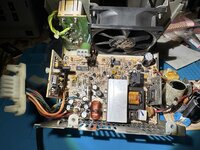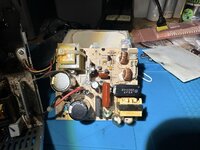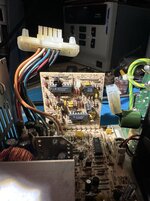Hi everyone, just got hold of a wonderful Quadra 650 in great shape. I am having some issues powering it on, though.
After receiving it and cleaning it up, I turned it on, saw that everything worked and went to bed. Next morning it wouldn’t turn on anymore. Skimmed over some stuff about the 5V trickle charge and asked a friend to bring over his Quadra 700 power supply - everything worked immediately. Thought it could be a caps issue since it worked once, so I got to work and recapped the power supply.
Turned it on and lo and behold! Everything worked - “fixed it” or so I though. Turned the 650 went to do other stuff and came back tonight to the same exact symptoms as the first time.
That got me thinking - it’s kinda like it only starts up when caps are completely depleted?
I intend to keep the original power supply so I was wondering if any of you guys could enlighten me on the 5V trickle issue (saw a PDF that suggested replacing a diode with two 1N4148s?) - if it helps, before recapping I tried powering on the power supplying shorting pin 9 and 10 and it didn’t work, not sure if it will start the fan now, will try tomorrow.
Thanks for looking!
After receiving it and cleaning it up, I turned it on, saw that everything worked and went to bed. Next morning it wouldn’t turn on anymore. Skimmed over some stuff about the 5V trickle charge and asked a friend to bring over his Quadra 700 power supply - everything worked immediately. Thought it could be a caps issue since it worked once, so I got to work and recapped the power supply.
Turned it on and lo and behold! Everything worked - “fixed it” or so I though. Turned the 650 went to do other stuff and came back tonight to the same exact symptoms as the first time.
That got me thinking - it’s kinda like it only starts up when caps are completely depleted?
I intend to keep the original power supply so I was wondering if any of you guys could enlighten me on the 5V trickle issue (saw a PDF that suggested replacing a diode with two 1N4148s?) - if it helps, before recapping I tried powering on the power supplying shorting pin 9 and 10 and it didn’t work, not sure if it will start the fan now, will try tomorrow.
Thanks for looking!



